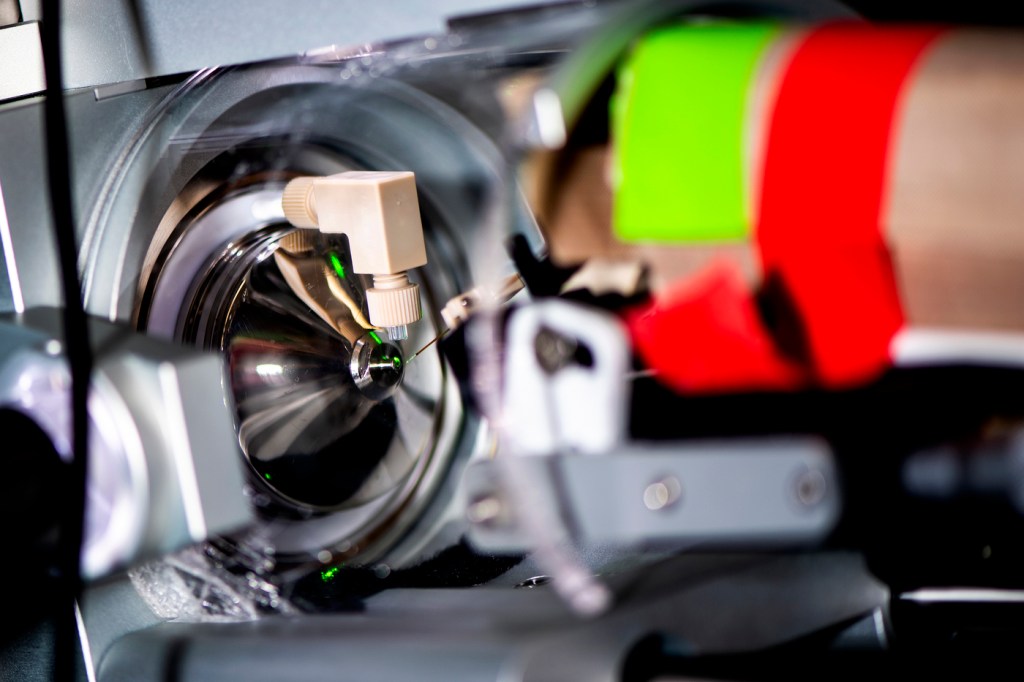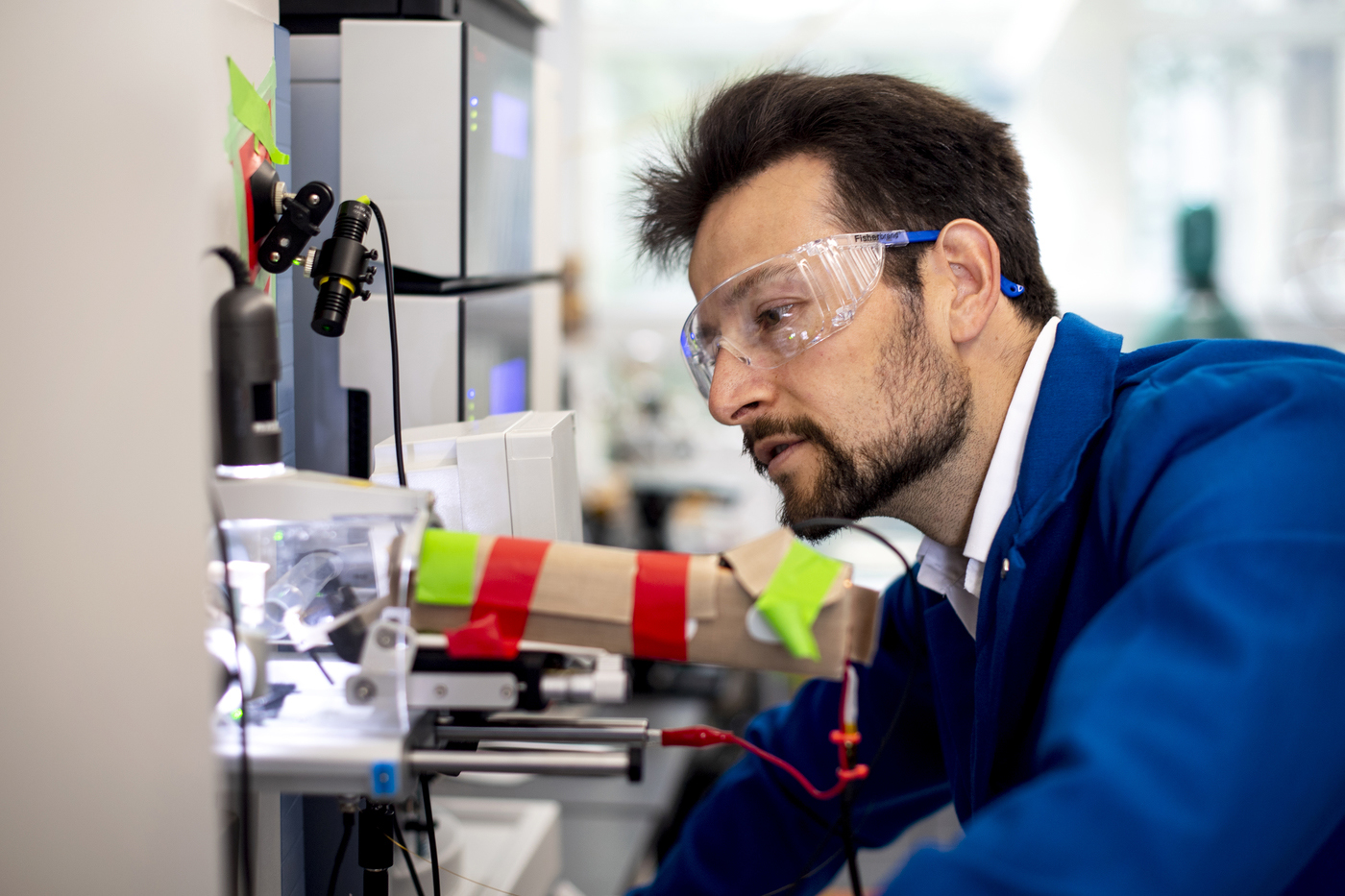Proteins are the workhorses of our bodies. Here’s how we can understand them better.

Proteins are the little machines that make cells work. Some keep cells safe from viruses and bacteria, others turn light into food. Proteins carry messages, break down chemicals, copy DNA, and give cells their structure.
Basically, they do everything. Every biological function is performed by proteins, which is why understanding how these molecules work is crucial for many types of research.
But scientists have only recently begun measuring proteins in single cells, and right now, they don’t have instruments sensitive enough to measure the trajectories, or lifespans, of proteins that are naturally found within a cell.
Instead, standard practice is to “take a large chunk of tissue, grind it up and analyze the average of all proteins in that group of cells,” says Nikolai Slavov, assistant professor of bioengineering at Northeastern, whose research focuses on measuring proteins in single cells and chronicling proteins over time. This research is supported by an Allen Distinguished Investigator Award, a Paul G. Allen Frontiers Group advised grant of the Paul G. Allen Family Foundation.

Right now, the standard process for measuring proteins obscures a lot of details. “The cells lose their individuality, which is how you can understand a lot about a cell’s physiology,” Slavov says. “These current approaches infer the trajectories of single cells and rely on extrapolation.”
To make these measurements more accurate, Slavov’s lab proposed a method that not only measures proteins in individual cells, but also has the potential to track changes in proteins over time. Slavov says he will use the $1.5 million grant from the Frontiers Group to further develop this advance.
One reason current instruments can’t observe protein functions over time is because the measurement process is inherently destructive. To identify the proteins, scientists have to break them down into smaller pieces, either peptides or amino acids, Slavov says.
While Slavov’s methods are still destructive, his lab has pioneered a new way to extract information about the cell’s history in the process.
“I like to call it a travelogue of the cell,” Slavov says. “It can remember and encode information for various proteins in the past, what their turnover was, and what their function was.”
Slavov’s team created a method of identifying a protein by atomic weight and then following its trajectory—a method Slavov plans to further refine with the help of the grant. Here’s how it works: Amino acids, the smallest building blocks of a protein, are injected into a cell. These amino acids are composed of atoms that come in various types, called isotopes, which differ by atomic weight because of added neutrons.
The added neutrons don’t change the chemical structure of amino acids or the proteins they will create, but they do change the atomic weight. This added weight is used to identify proteins in a cell and measure how they change over time.
“This is a simplified example, but let’s say on Tuesday we feed the cell amino acids that have a specific weight, then on Wednesday we feed the cell amino acids with a different weight, and on Thursday we feed the cell amino acids with another weight, and so on,” says Slavov.
“When we eventually do the measurements and break apart the cell, we know which proteins are made on which day because they have a certain weight depending on which amino acids they used,” he says.
Identifying when a protein was made is important because it enables scientists to observe how a protein changes over time. That’s one of the biggest questions when it comes to cell differentiation, for example.
Cells differentiate—turn into specialized cells such as heart cells, lung cells, brain cells, etc.—when they receive information from neighboring cells.
“One question we can investigate with this technology is: What are those signals?” Slavov says. “If we know that information, we can control a cell’s fate.”
Researchers who ask big biomedical questions, such as how the immune system works, or how memories are made, will find these techniques invaluable. “But these questions can’t be answered with the existing methods,” says Slavov. “To further advance our research, we need to develop the tools.”
For media inquiries, please contact media@northeastern.edu.





